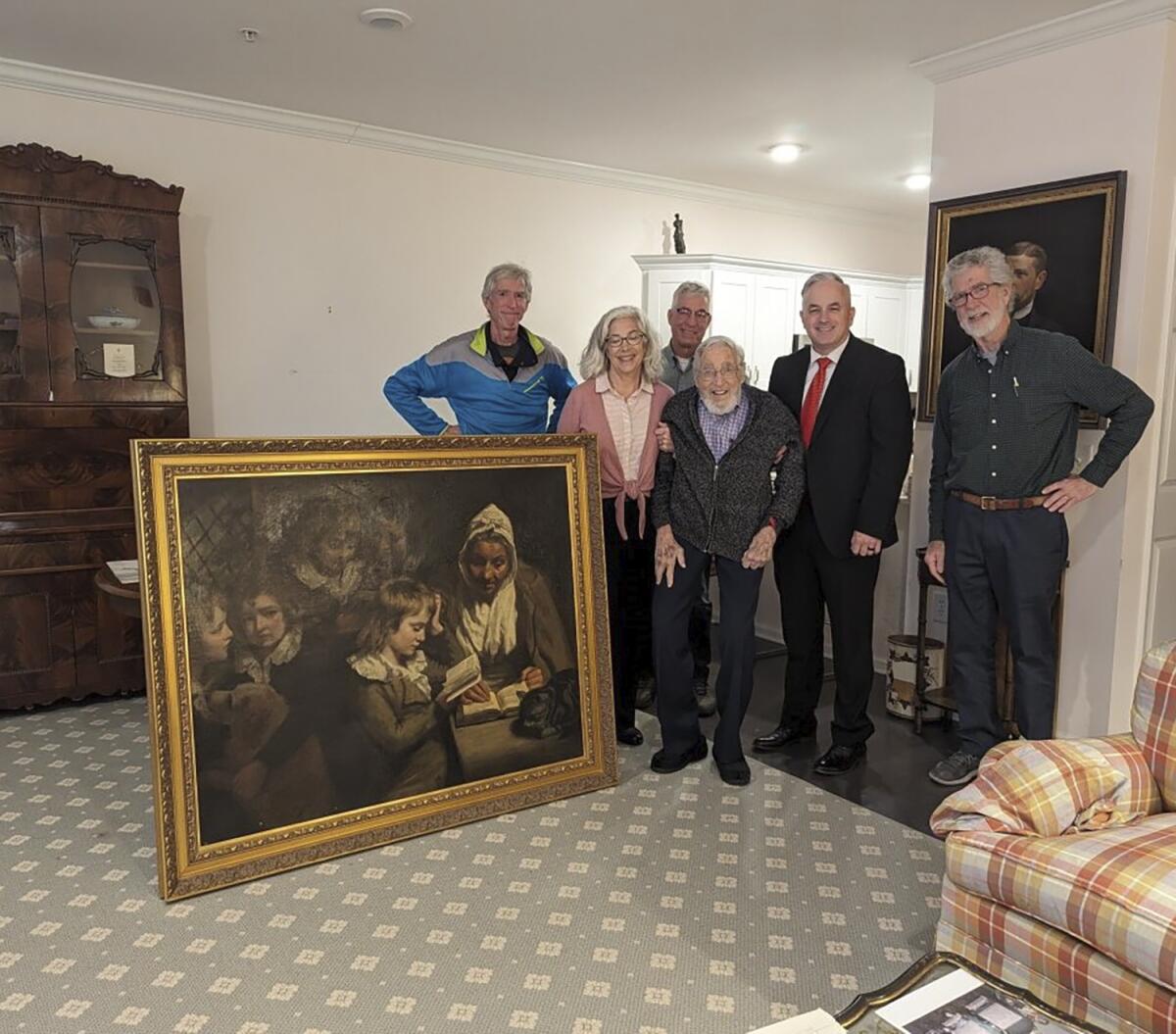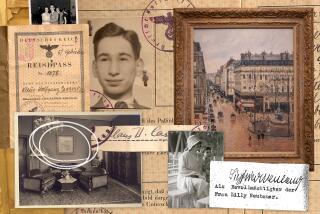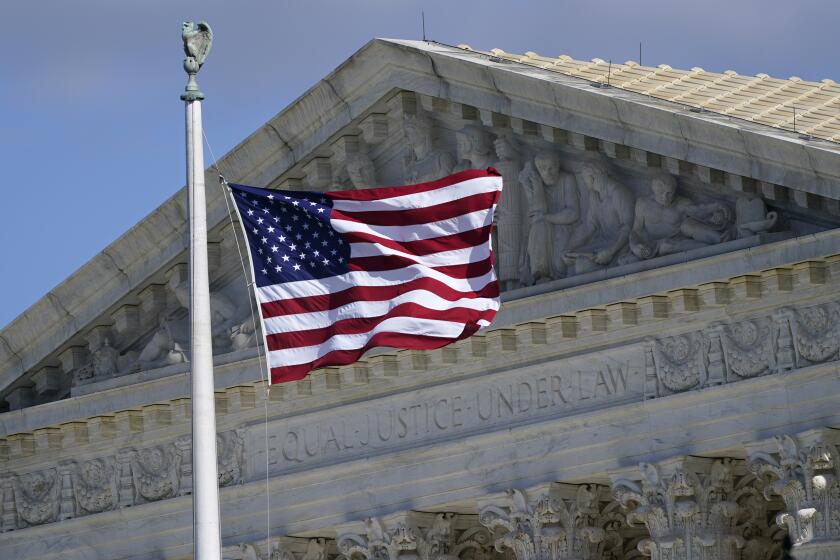A British painting stolen by mobsters is returned to the owner’s son — 54 years later

- Share via
An 18th century British painting that was stolen by mobsters in 1969 has been returned to the family that bought it for $7,500 during the Great Depression, the FBI’s Salt Lake City field office announced Friday.
The 40-by-50-inch John Opie painting “The Schoolmistress” is the sister of a similar work housed in London’s Tate Britain art gallery.
Authorities believe “The Schoolmistress” was stolen with the help of a former New Jersey lawmaker, then passed among members of organized crime groups for years before ending up in the southern Utah city of St. George. A Utah man in 1989 purchased a house in Florida from Joseph Covello Sr. — a convicted mobster linked to the Gambino family — and the painting was included in the sale, the FBI said.
When the buyer died in 2020, a Utah accounting firm that was seeking to liquidate his property sought an appraisal for the painting, and it was discovered that it was likely the stolen piece, the FBI said.
The painting was taken into custody by the agency pending resolution of ownership and on Jan. 11 was returned to Dr. Francis Wood, 96, of Newark, N.J., the son of the original owner, Dr. Earl Wood, who bought it during the 1930s, the FBI said.
Works by Opie, a British artist whose paintings included portraits of the royal family, have sold at Sotheby’s and Christie’s, among other auction houses. One sold in 2007 for almost $1 million.
“This piece of art — what a history it’s had,” said FBI Special Agent Gary France, who worked on the case. “It traveled all through the U.K. when it was first painted and [was] owned by quite a few families in the U.K. And then it travels overseas to the United States and is sold during the Great Depression and then stolen by the mob and recovered by the FBI decades later. It’s quite amazing.”
According to the FBI, “The Schoolmistress” was taken from Earl Wood’s house by three men working at the direction of former New Jersey state Sen. Anthony Imperiale, who died in 1999. Imperiale, a political firebrand who also served as a Newark city councilman, was in the national spotlight in the 1960s as a spokesman for cracking down on crime. He was divisive, organizing citizen patrols to keep Black protesters out of Italian neighborhoods during riots in Newark in the summer of 1967.
Authorities say thieves broke into the house in July 1969 in a bid to steal a coin collection but were foiled by a burglar alarm. Local police and Imperiale responded to the attempted burglary; the home’s caretaker told the lawmaker that the Opie painting was “priceless,” the FBI said.
Three men returned to the house that month and stole the painting, the FBI said.
Gerald Festa later confessed to the burglary in the 1975 trial of an accomplice and said the trio had been acting under Imperiale. Festa said the three visited Imperiale before the theft and were told by the lawmaker where to find the painting in Wood’s home, according to the FBI. Festa also testified that Imperiale had the painting.
But the claims against the lawmaker were not sufficiently corroborated, and he was never charged, France said.
No charges have been filed by the FBI since the painting’s recovery, because all of those believed to have been involved are dead, France said. The men who stole the painting were all convicted of other mob-related crimes before their deaths, he said.
Brown writes for the Associated Press.
More to Read
Sign up for Essential California
The most important California stories and recommendations in your inbox every morning.
You may occasionally receive promotional content from the Los Angeles Times.









